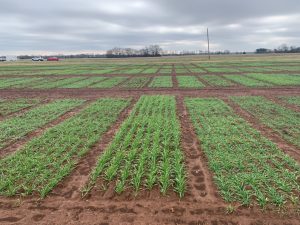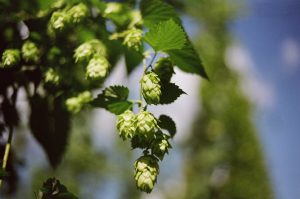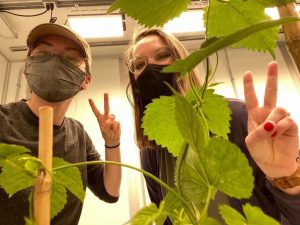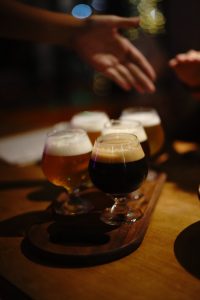
India pale ale. Lager. Stout. Porter. Witbier. Pale ale. Kolsh. These are just a few of the unique styles of beer that can be created using water, malted grains, varying amounts of hops, and different types of yeast. Craft and home brewing have grown in popularity over the past decade, becoming somewhat of an art form.
But as one of our guests on this episode put it, ‘brewing beer is a science’ too. In this Tiny Expedition, we set out to discover just how much science contributes to the brewing industry and whether it can help create the perfect craft beer.
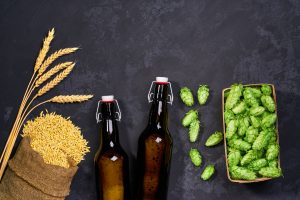
Craft breweries initially began popping up along the west coast because that is where the majority of the barley and hops are grown in the United States. Brewers in the eastern half of the US must import these important ingredients from growers out west. It turns out scientists are trying to create regional varieties of barley and hops that can be grown across the US.
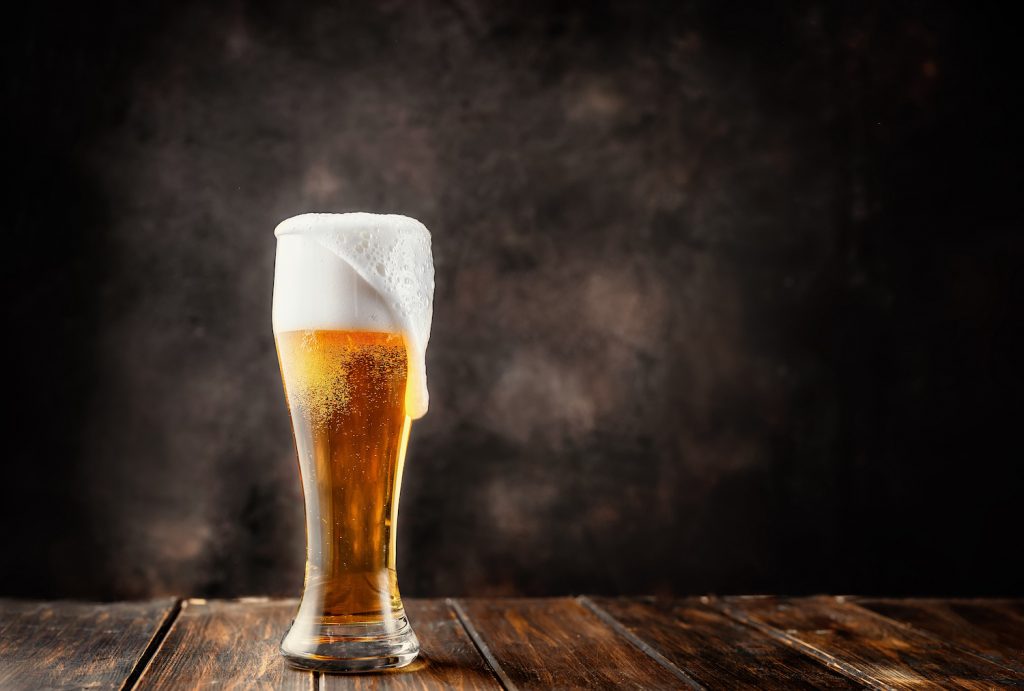
Science is also helping to improve another key ingredient in beer: yeast. Gene editing technology is being applied to yeast to help it express different flavors or unlock hidden flavor compounds in barley and hops.
Listen to Tiny Expeditions Season 2, Episode 4: “Can science create the perfect craft beer?” to journey into the craft brewing industry and learn how scientists are trying to create the perfect locally sourced craft beer.
Behind the Scenes
Humans have been enjoying fermented beverages like beer for thousands of years. Although it is difficult to attribute the invention of beer to any one culture or time period, evidence of beer production dates back about 5,000 years to the Sumerians of ancient Mesopotamia.
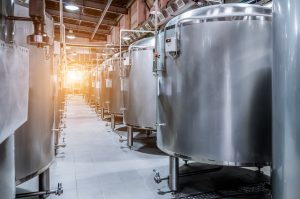 The first brewery in America opened in the early 17th century in the area now known as New York City. Since then, the brewing industry in America has ebbed and flowed with the changing cultures of the time. Prohibition and war times were especially hard on the beer industry but it has bounced back stronger than ever.
The first brewery in America opened in the early 17th century in the area now known as New York City. Since then, the brewing industry in America has ebbed and flowed with the changing cultures of the time. Prohibition and war times were especially hard on the beer industry but it has bounced back stronger than ever.
It turns out, Americans love their beer. The number of operating U.S. breweries grew from about 280 in 1990 to more than 8,880 in 2020. But have you ever thought of how your pint of craft beer is made? It surely does not just magically appear at your local craft brewery. Beer brewing is a unique mix of art, science, imagination, and a lot of hard work.
Beer brewing process
There are four key ingredients in most beers: malted barley, water, hops and yeast. You heard about how science is helping to improve and reimagine some of them in this episode of Tiny Expeditions but we did not get into the science behind the actual brewing process much. Let’s briefly discuss the brewing process.
The process of brewing beer begins with harvested grains. Traditionally barley is the base of many beers but wheat, oats and rye are sometimes used. The grains must be prepared for brewing through a process called malting. Basically malting allows the grains to partially germinate which helps form the enzymes and starches necessary for the fermentation step.
In the mashing step, malted barley is combined with hot water to produce a sugary mixture. This step activates enzymes in the grains that causes starch in the malt to break down and release simple sugars. At this point, the spent grains are removed from the liquid portion (called wort) and hops and other spices are added for bitterness, flavor, and aroma.
Once the hop-wort mixture has boiled, it is cooled down and moved to a fermentation tank. Here yeast is added to the mix. The yeast eats the sugars that were produced from the grain starch and creates alcohol and carbon dioxide (carbonation).
The liquid is fermented for several days to weeks depending on the type of beer that is being produced. After fermentation, the beer will rest for a few days to weeks to allow full development of flavors and textures. After resting, the beer is ready for carbonation, filtration, and packaging into casks, kegs, bottles, or cans.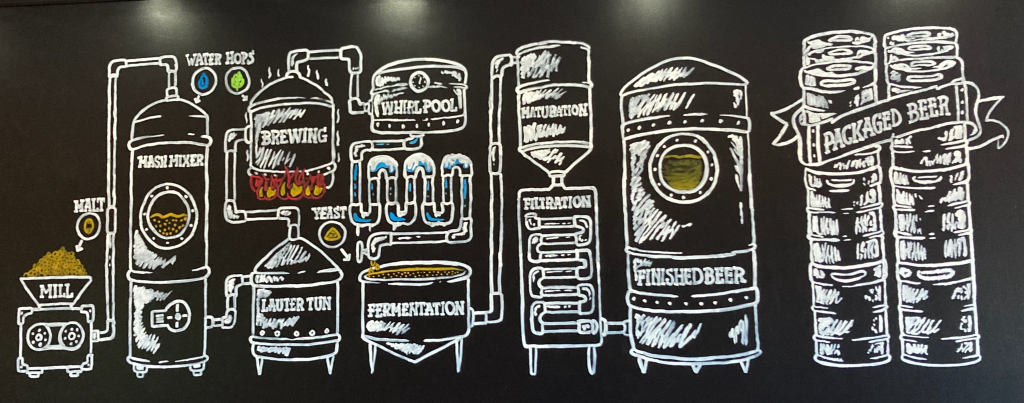
Now that we understand how each of our star ingredients play into the development of a pint of beer, let’s go behind the scenes with our guests from the episode.
Barley
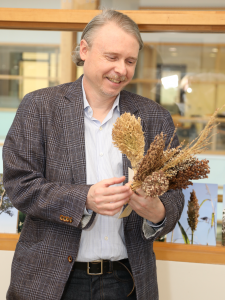 Jeremy Schmutz (left) and his team at the HudsonAlpha Genome Sequencing Center are experts at producing, analyzing and interpreting genomic data on economically important plants to improve crop breeding and other agricultural practices. It was their work on the early barley genomes that got Jeremy and the other leaders of the HudsonAlpha Center for Plant Science and Sustainable Agriculture first thinking about growing barley in Alabama.
Jeremy Schmutz (left) and his team at the HudsonAlpha Genome Sequencing Center are experts at producing, analyzing and interpreting genomic data on economically important plants to improve crop breeding and other agricultural practices. It was their work on the early barley genomes that got Jeremy and the other leaders of the HudsonAlpha Center for Plant Science and Sustainable Agriculture first thinking about growing barley in Alabama.
Although barley was historically grown in Alabama, most of the barley in the United States today is grown in Montana, Utah, Colorado, Wyoming, Washington, Oregon, and California. Barley in the Midwest is harvested late July to end of September. Because Alabama’s winter climate is mild, the team wondered if barley could be grown in Alabama over winter between farmers’ other crop rotations.
The team at HudsonAlpha, along with collaborators from Auburn University’s departments of Crop, Soil and Environmental Sciences and Entomology and Plant Pathology, and Alabama A & M’s Winfred Thomas Agricultural Research Station, are developing a pilot pipeline to import and test new crop varieties that could be deployed by Alabama farmers.
Like we mentioned in this episode, the team at Alabama A & M planted 25 varieties of barley at their field station while the team at Auburn planted about 50 varieties. The image to the right shows the Auburn field pilot planting.
Hops
Like we learned in this episode, hops are the flowers, or cones, of a plant called Humulus lupulus. Hops do a number of things for beer. They help to keep beer fresher, longer and help beer retain its head of foam. And probably their most popular attribute is adding “hoppy” aroma, flavor, and bitterness to beer.
Americans have been growing hops since early colonial times. The first commercial hop production was a 45-acre garden established in 1648 to supply a brewery in the Massachusetts Bay settlement. Massachusetts remained the country’s most important hop supplier for the next 150 years, until production expanded to other New England states.
Today the majority of hops are produced in the Pacific Northwest (WA, OR, CA, ID). About 75% of the hops are grown in Yakima Valley, WA. That means that breweries outside of the western US must import hops, often across the entire county.
Dr. Sarah Carey (left) hopes to help bring hops to the eastern US by creating reference genomes for the entire genus of Humulus. To create these reference genomes Dr. Carey extracts all of the DNA from hop leaves. Then she sequences it and then assembles it into references. The reference genomes can be used to compare across the groups to see how the genomes have changed across these different varieties and species. The team hopes to identify genes that give hops a growth or survival advantage outside of its normal environment.
Yeast
 Yeast is a single-celled living organism that belongs to the fungus kingdom. These tiny microorganisms have long been an important component of baking and brewing. Yeast is the main player in fermentation and is the most important element of making beer alcoholic and carbonated. Yeast convert the glucose from hops and grains into ethanol, or alcohol, and carbon dioxide which is used for carbonation.
Yeast is a single-celled living organism that belongs to the fungus kingdom. These tiny microorganisms have long been an important component of baking and brewing. Yeast is the main player in fermentation and is the most important element of making beer alcoholic and carbonated. Yeast convert the glucose from hops and grains into ethanol, or alcohol, and carbon dioxide which is used for carbonation.
It turns out yeast is also a major contributor to the flavor of beer as well, which is not something many of us might think about. The type of yeast used in the brewing process defines the beer. Dr. Josh Clevenger (right) really opened our eyes to just how much yeast can change a beer’s flavor by home brewing us a few side by side comparisons of beer using traditional yeast and yeast that has been genetically modified to create or express different flavors.
Our first pairing was the traditional Hefeweizen and a beer brewed with the Omega Bananza™ yeast. The Hefeweizen had that traditional banana and clove flavor. But when we took a sip of the beer brewed with Bananza, the clove flavor was absent. That’s because unlike the yeast traditionally used to brew Hefeweizens, Bananza is non-phenolic which means it is incapable of producing clove flavors.
Next we tasted a pair of beers that packed a little bit more punch. One of the beers was brewed using Omega’s Sundew™ yeast, which is another non-phenolic yeast. Sundew is incapable of producing the clovey flavors and instead produces a juicy strawberry, passion fruit, pears and stone fruit flavor. It had a subtle fruity flavor that was easy to drink and would be refreshing for a day at the beach.
Dr. Clevenger paired this one with a beer brewed with Omega’s Comic Punch™ yeast. Cosmic Punch was developed to transform compounds found in malt and hops to release thiols, which are aromatic compounds with tropical flavors like grapefruit, passion fruit, and guava. So this yeast is basically unlocking flavor compounds in malt and hops that would not be experienced otherwise. The beer definitely packed a punch with the tropical flavors compared to the beer brewed with the Sundew yeast.
Chris Powell 00:03
Welcome to Season Two, episode four of Tiny Expeditions, a podcast about genetics, DNA, and inheritance from the HudsonAlpha Institute for Biotechnology.
Sarah Sharman 00:12
In today’s episode, we’re talking all about craft beer.
Chris Powell 00:16
If you haven’t noticed, craft beer is on the rise. New breweries are popping up all over the place. There’s something about the art and craft of the process of beer making that draws us in. And well, it’s rather tasty as well.
Sarah Sharman 00:29
Of course, if you’re going to have craft beer, you have to have the ingredients to make it, and that’s going to be the focus of our expedition today.
Chris Powell 00:36
Today, we’re gonna sit down with three guests from the HudsonAlpha Institute to talk about the science of craft brewing.
Sarah Sharman 00:43
We’ll talk about growing barley and hops in Alabama and creating new beer flavors from gene-edited yeast.
Chris Powell 00:49
My name is Chris, I’m going to be your storytelling guide for today.
Sarah Sharman 00:52
And I’m Dr. Sarah Sharman, your science advisor for this expedition.
Chris Powell 00:56
So, let’s get started by talking about barley with Jeremy Schmutz. He’s the co-director of the Genome Sequencing Center at the HudsonAlpha Institute.
Jeremy Schmutz 01:05
Yeah, I’m Jeremy Schmutz, and I’m a faculty investigator at the HudsonAlpha Institute for Biotechnology, and we work on plants and plant genomics. We’ve been interested in barley for just about a year and a half now, not too long, relatively new. We worked on the original barley genome sequencing project many years ago. And then, we had an opportunity last year to work on a new version of the barley genome sequence using our sort of latest technology in this single molecule high throughput sequencing. And then out of that grew project just to start to look at the question of whether we could grow barley here for Alabama.
Sarah Sharman 01:44
The question of whether we can grow barley here in Alabama is an important one. Barley used to grow in the Deep South, but it is no longer grown here. There is a renewed interest to see if barley, along with other beer-making ingredients like hops, can again grow and flourish in the South. However, a study of this magnitude takes many collaborators.
Jeremy Schmutz 02:04
So there’s actually multiple partners involved in this project now for Alabama, which has recently been funded from ADECA, which is the Alabama economic development arm. And the idea here is that we have both Auburn University and Alabama A&M working on the field and agronomy sides of this project. And this includes, in the barley case, growing barley overwinter at multiple locations. Alabama, in this case, has two locations at Auburn Field Station sites and then also at Alabama A&M, which is somewhat close by here at HudsonAlpha Institute. And then growing the barley over winter to test a bunch of different varieties which come from different locations in the US, including from North Dakota State’s breeding program and then also from Virginia Tech’s breeding program. And then some other lines that are mixed in there to try to evaluate which of these barley lines will be successful make all the way through the winter and then come back again and produce seeds be harvestable, have low disease, and then also be usable downstream in things like the Alabama brewing industry.
Sarah Sharman 03:14
Jeremy and his team wasted no time getting started on this project. They brought in barley varieties that are known to grow elsewhere in the United States and tried to see if they could plant them in Alabama.
Jeremy Schmutz 03:25
Yeah, we did a pilot last year with A&M. A&M planted 25 varieties, and Auburn organized a pilot to plant a much larger set of varieties they had, I think, over 50 varieties in the Auburn planting. And then at the end of the year, which here in this case it would be early summer, late spring of this year, the material was harvested at those locations, and then we spent a good amount of it for phenotyping to look at questions. Phenotyping means evaluating the output of that crop to see whether it was multiple, for example, for brewing, and what the nutritional characteristics were. And I think as a result of this, we have pretty good success in potentially, definitely being able to grow barley over winter, and then being able to potentially use it downstream and applications.
Chris Powell 04:15
So, you may be asking, what’s the point? Why do we want barley in the South? Well, there’s two answers to that question. Number one, economic reasons. We want to diversify the agricultural economy of the South. And another reason is we want our craft beer to be from the south.
Jeremy Schmutz 04:31
I think that the interest here is that barley is an opportunity to have a potentially higher impact economic crop than wheat for growers in Alabama. That’s primarily because with barley, you can ferment it and turn it into beer. Rather than necessarily barley as only a food crop, although barley is also used as a food crop. You know, if we can have a local industry that uses any crops that are grown here in Alabama, then that adds greatly to the economic impact for Alabama. So rather than growing a commodity crop where it effectively gets sold in the commodity market, actually grow crops that we can use downstream here in Alabama to produce goods and services or for people here in the southeast.
Sarah Sharman 05:23
Like barley, hops are important to brewers, but they naturally grow in the 35th to 55th parallels, which means not in the South. Our next interviewee is working to change that.
Sarah Carey 05:34
We are going to be able to grow hops in Alabama, we are going to be able to have locally sourced hops right down the street or just a couple hours away. We’ll have adaptive lines or maybe our own new flavors of lines that we can grow here locally.
Chris Powell 05:50
That’s the voice of Dr. Sarah Carey.
Sarah Carey 05:53
Hi there. My name is Dr. Sarah Carey. And I work with Dr. Alex Harkess, here at HudsonAlpha Institute for Biotechnology. And we also work for Auburn University down in Auburn, Alabama. My research focuses on the evolution of sex chromosomes and plants, which is really, really rare in flowering plants, like hops that we’re going to talk about today. It’s really useful for breeding programs. So what we do is we sequence genomes of these species that have sex chromosomes, like hops, and try and figure out what genes are on these regions and how we can use them to make delicious hops and great crosses.
Chris Powell 06:33
One of the questions we have for Dr. Carey was, well, where does an idea like this come from? How did you get started researching hops? And once the idea hit? Well, what’s the next steps? Where do you go from there?
Sarah Carey 06:45
Because I’m a postdoctoral associate, there are often these fellowships that we write at the stage of our careers that can give us research funding and help us get these fellowships. And we were trying to come up with ideas for ones that would be competitive for a fellowship. And Alex suggested, what about hops because we know it’s delicious. The females make the delicious hop cones we use in breeding. They have sex chromosomes. They’ve been studied for a long, long time, psychologically. But there’s not a lot of genomics that has been done. And so, we thought this would be great for a fellowship kind of application.
Sarah Sharman 07:24
In order to study sex chromosomes and other useful genes in the hops genome. Dr. Carey needs a reference genome to compare it to. But there are many hop varieties. So, where do you even start?
Sarah Carey 07:36
Hops are dioecious, which means that about half of the individuals of the plants grow carpels, which make eggs, and half of the individuals of the species make stamens. So, there are female and male plants, much like we find in animals, where half of the individuals are male, and half are female. So, this is really, really rare in plants. It has evolved 1000s of independent times across flowering plants alone. It’s really, really useful for breeding because if you can control which egg receives which pollen, you can control the crosses that you’re making much more easier than in other species of flowering plants, where the pollen may just land on itself and kind of have its own crosses that you’re less than control of. And so we only really economically want to grow the females to make hop cones to put in beer, but need males to be able to make these particular crosses that we want to get plants to have new fun flavor profiles, or try and get them to grow in different locations.
Sarah Carey 08:45
So, we want to sequence genomes for all of the five varieties of Humulus lupulus. And then also its sister species, Humulus japonicus. And so most beer that is produced uses this one variety of hops, one of the five, and that’s Humulus lupulus variety lupulus. And this descends from parts of Europe and parts of Asia. And so, it’s really from that region. And it does grow really well in similar environments. So anywhere else, kind of in the 35th to 55th parallels of any country, at least hops grow really well. That kind of keeps it to certain parts of the United States. So, if we want to start growing hops in a place like Alabama, which is not in the 35th, it’s below the 35th parallel, we have to start thinking about how we can breed selectively to get them to grow happily here.
Sarah Carey 09:40
And so, it turns out there are three of the varieties grow in the United States, they grow wild here. So, there’s a Humulus lupulus variety neomexicanus is native to ranges that are below that 35th parallel like Arizona and Mexico. So much drier and have that similar kind of photo period that we would need to grow hops in Alabama. So, we thought, well, let’s sequence the genome for Humulus lupulus variety lupulus because that is the really important economic one. Let’s look at these other varieties too, that grown in these different localities, and see if we can find genes that might help us selectively breed plants to grow better in these different novel locations. And so, we talked about adding in the neomexicanus. And then we’re like, well, you know, if we’re going to do two, let’s do three genomes, we can do pubescens, as well, which has a different range. If we’re gonna do three, let’s do four. So, we’ll add lupuloides. And then kind of turned into well, we’ll do all five, all five varieties, which cordifolius is the other one which has a different range in parts of Asia. So, then we’re like, well, if we’re already down, we’re going to do five genomes, let’s do six, we’ll do the entire genus. And so, we can have this really nice comparative framework for the entire genus of Humulus and see how the genomes have changed across these different varieties and species.
Chris Powell 11:10
It may seem like there’s a fine line between a scientist and a brewer. And that fine line gets even more blurred when we’re talking about Dr. Josh Clevenger. You’ve heard from Dr. Clevenger before on previous episodes of Tiny Expeditions. But today, we want to talk to Dr. Clevenger about his home brewing, and specifically about a third important ingredient for brewers, yeast.
Josh Clevenger 11:33
So, my wife got me for Christmas, which I’m sure she regrets it now, but she got me a home brewing kit for Christmas in 2011. So about 10 years. And for a long time, I did everything wrong. I was just whatever, I didn’t check temperatures I was the worst. But when I started becoming a serious scientist and started realizing that the brewing process was all biological, and it was basically brewers are our scientists all the time, you know, they’re making little differences and experimenting to see. And really, the phenotype is not disease resistance or something like that. But the phenotype is I like this, I don’t like this. Or this is good beer, this is junk beer. So, I got really into thinking about the process and producing the beer that I wanted to drink, instead of just buying the beer that I didn’t really want to drink but was the only beer that was at the store.
Sarah Sharman 12:34
These days, when you hear people talking about beer flavors, it seems like hoppy notes or malty texture always come up. But it turns out yeast is a very important contributor to the flavor profile too.
Josh Clevenger 12:47
The yeast is the most interesting contributor to flavor. In fact, if you take the same beer and split it into 10 batches and pitch 10 different kinds of yeast, you’re gonna get very different beers. And that’s because the particular enzymes and activity of those yeast strains are doing different things with the compounds. The actual wort is this is this really rich soup of lots of vitamins and minerals and different compounds that are coming out of the of the barley grain itself from the hops. And so, there’s just lots of expression that the yeast can do in that process. So yeah, yeast is a major player and contributing to flavor.
Chris Powell 13:32
We’ve talked a lot about craft brewing, but we decided we probably needed to try some of this in the name of science, of course. So, Sarah and I sat down with Dr. Clevenger. He brought in some of his latest experiments. And I know in grade school, we were told never try your science experiments. But in this case, we had a professional witness, so we decided to try it.
Josh Clevenger 13:57
So, I brewed some beer, and I did a sort of traditional homebrew experiment where I did what we call a split batch where essentially you just brew a batch of beer, and you split it into two fermenters, and you pitch different yeast in them, and you see what different flavors you get. And this time, it was more directed than that. I used a new strain of yeast released by Omega, and it’s called Bonanza. And this is a really simple edit that they did. This is one of their first gene-edited yeasts. And it’s a traditional hefeweizen yeast, which those of us that are familiar with the hefeweizen style it is noted for rich banana notes and clove spicy notes. And what Omega wanted to do is they wanted to turn off that spicy clove. In fact, and I didn’t know this, but that spicy clove flavor is actually considered an off flavor. So they call this yeast their phenolic off-flavor negative, meaning they don’t want that biosynthetic pathway to be expressed. That particular note is from a compound called 4-vinyl guaiacol. It’s produced by a gene that’s called FDC1. And so, in this first yeast that we’re going to look at, the Bonanza yeast, essentially, they just edit out FDC1. It doesn’t produce that compound. And so, all it produces is banana. I used it and a hefeweizen so you could see side by side with the traditional hefeweizen yeast, the difference between them. But actually, they recommend making like a banana milk stout or banana chocolate shake beer. I don’t know if I would do that. I don’t know if I want to drink that. But hopefully, you can tell, you know, the difference between these two yeast strains.
Chris Powell 16:03
So, we sat down and tried this first experiment that Dr. Clevenger offered us, and indeed, there was a difference between the two yeast that he used.
Sarah Sharman 16:13
I am generally a hefeweizen gal, so trying this was very interesting to me. The beer with the traditional hefeweizen flavors definitely had that punch of clove. But then, when we tried the one that was brewed with the Bonanza yeast, the clove flavor just wasn’t there.
Josh Clevenger 16:31
Yeah, you smell that spice? Yeah, that’s like a big difference that’s the phenolic. So this one’s expressed, and this one isn’t? Yeah, so same beer just split into two fermented side by side.
Chris Powell 16:46
Wow.
Chris Powell 16:52
But Dr. Clevenger, wasn’t through. He had some other drinks for us to try as well. And these packed a little bit more of a punch.
Josh Clevenger 16:59
So, what they did with Cosmic Punch was that they looked for an enzyme called beta lyase. What beta lyase does is it releases the precursor from these thiols. And so, it allows them to be there in beer. And what’s really interesting is that usually, you get them from yeast, I’m sorry, usually, you get them from hops, but the precursors are in really high concentration in the barley. So actually, what this yeast is doing is it has this beta lyase gene that’s normally inactivated. It’s naturally found in the yeast, but it was a gained mutation. Yeast didn’t need it because we didn’t select for it, and so it was gone. In the yeast strains that it was there and active, it’s turned off in wort because wort has high levels of nitrogen. What they did was they took this beta lyase gene that was not mutated, which did what it was supposed to do. And they put it on a promoter that always expressed it even under these conditions in wort. And so, what it’s doing is it’s actually releasing these thiols from the precursors that are in the barley. So, the yeast is producing hop-like flavor and aroma from the actual barley and not from the hops. So, for me, that is an incredibly sort of creative way to produce new flavors because they weren’t thinking about how do I get more juicy aroma and flavor from the hops they’re thinking how can I use the yeast to get it from the barley itself?
Sarah Sharman 18:35
That’s the amazing thing about science. We can reimagine new ways to experience the world, or in this case, tasting barley, hops, and yeast in our favorite craft beer.
Chris Powell 18:46
Now that we know more about the science behind craft brewing, take a moment, go visit your local brewery. See what new beers are on tap, taste the new flavors, and then thank a scientist for their work on barley and yeast and hops. Who knows, very soon that local beer may also have local ingredients. Thank you, science.
Sarah Sharman 19:12
Thank you for joining us for this tiny expedition into the science of craft brewing. Next episode we’ll find out if you can grow plants in space.
Chris Powell 19:21
Tiny Expeditions is a podcast about genetics, DNA and inheritance from the HudsonAlpha Institute for Biotechnology. We’re a nonprofit research institution in Huntsville, Alabama.
Sarah Sharman 19:31
We’ve got a campus full of scientists doing public research alongside companies developing products and services, all with one aim to translate genomic discoveries into real-world applications that make for a healthier and more sustainable world. That’s everything from cancer research to agriculture for a changing climate.
Chris Powell 19:50
If you find this podcast helpful, do us a favor and leave us a review wherever you’re listening to this and then tell somebody that you heard this interesting little story about genetics. Thank you for joining us.






